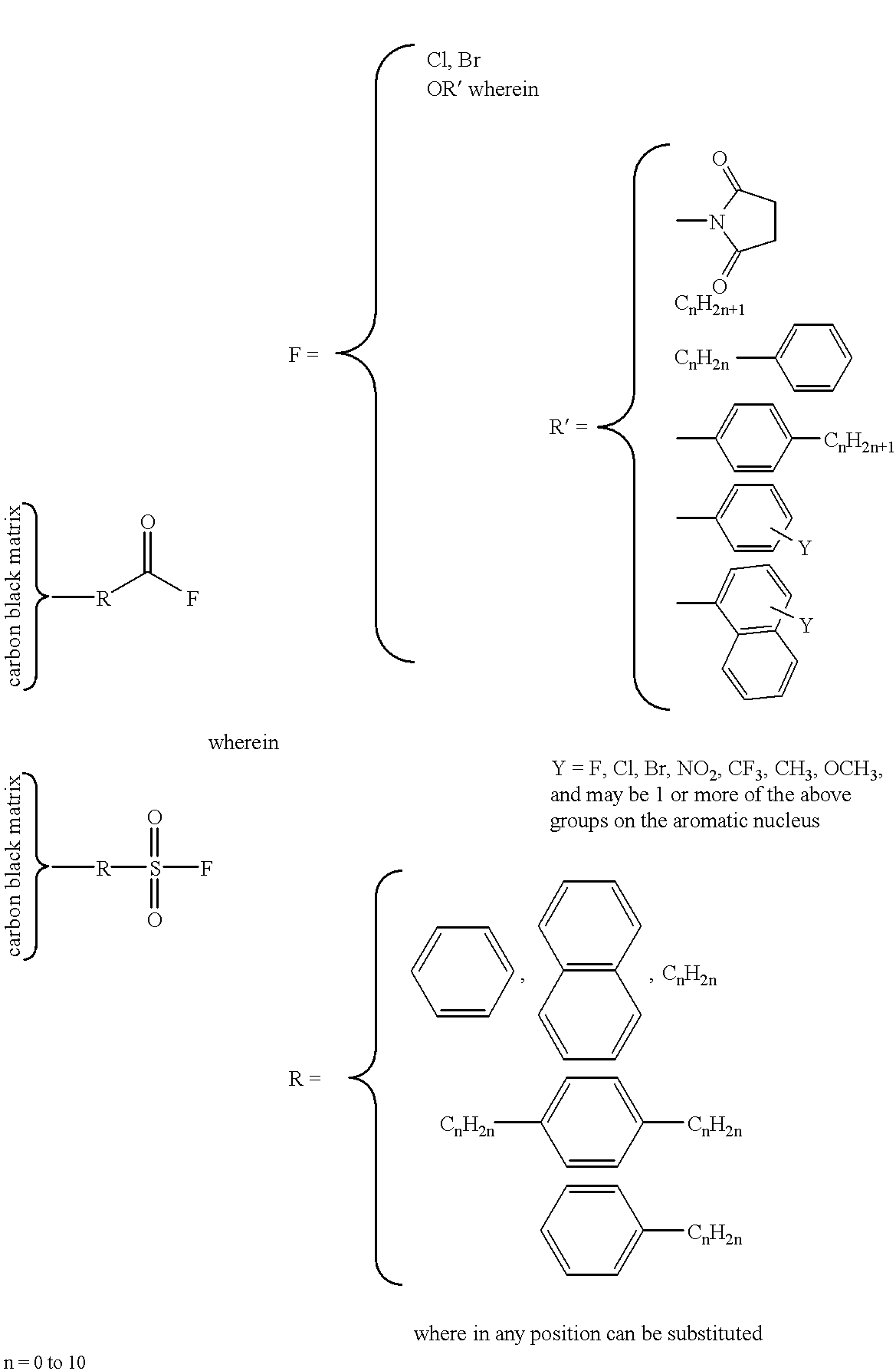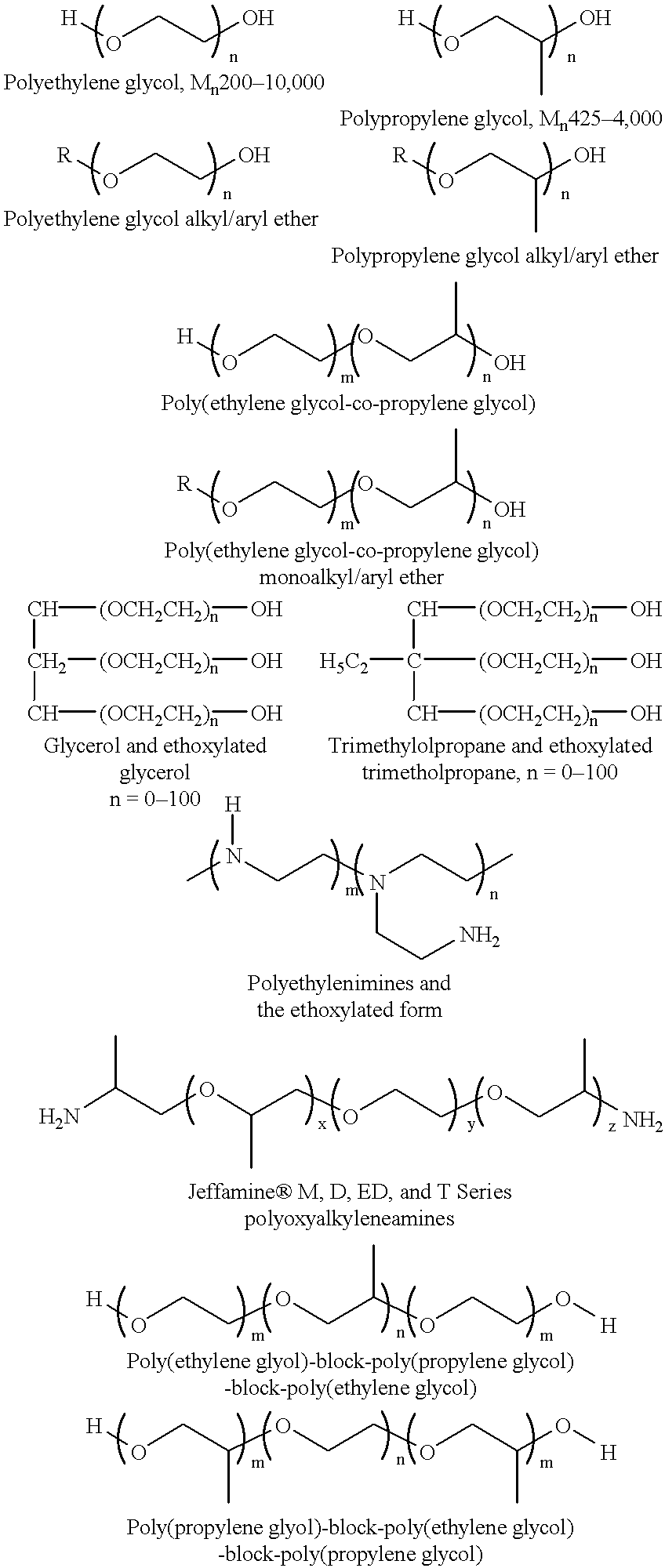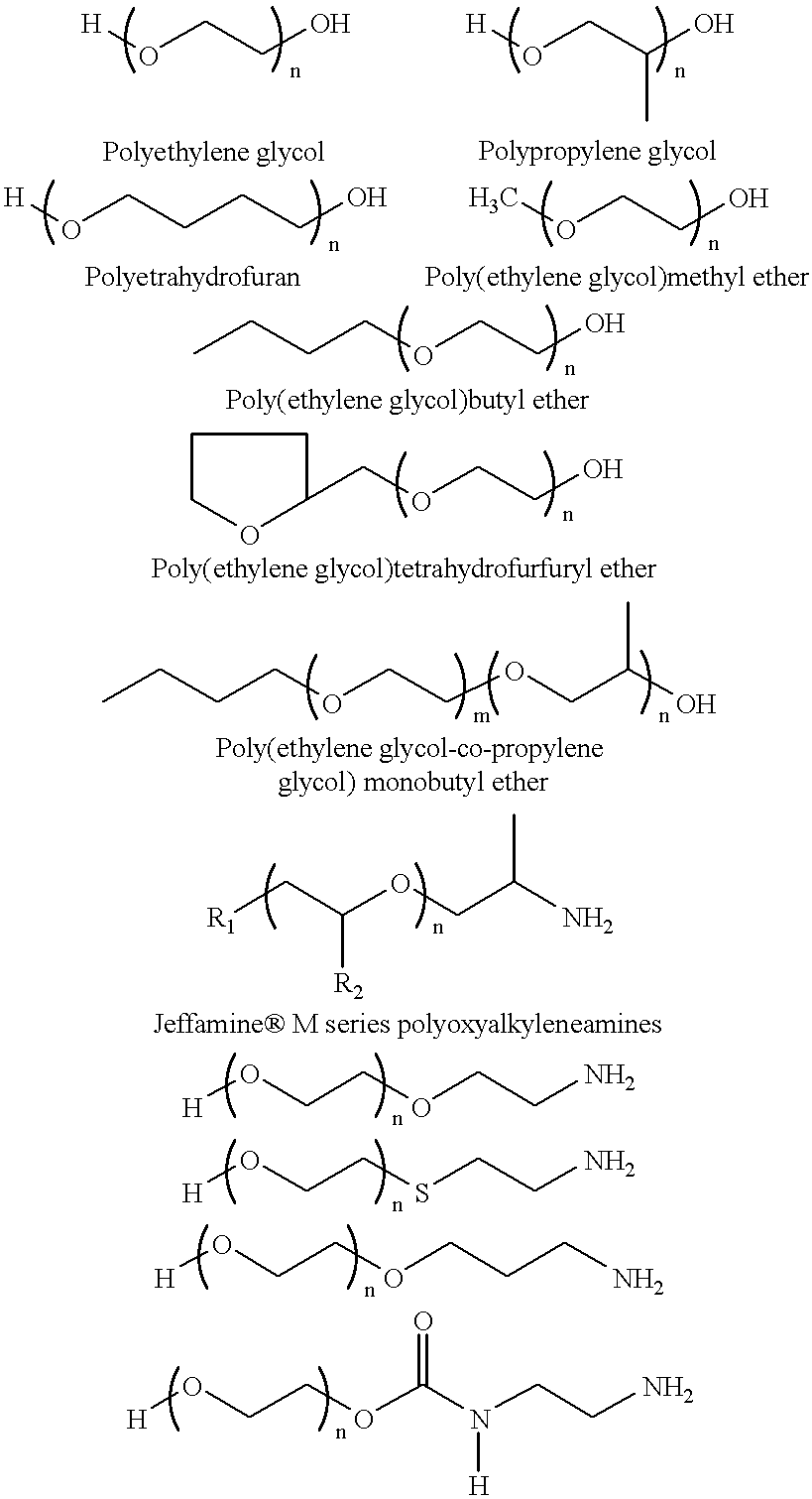Covalent attachment of polymers onto macromolecular chromophores by nucleophilic substitution reaction for inkjet printing
a nucleophilic substitution and inkjet printing technology, applied in the field of inkjet ink composition, can solve the problems of poor bleed control between colors, poor waterfastness, poor smearfastness, etc., and achieve the effects of reducing smear, reducing smear, and increasing waterfastness
- Summary
- Abstract
- Description
- Claims
- Application Information
AI Technical Summary
Benefits of technology
Problems solved by technology
Method used
Image
Examples
example 1
Preparation of a carbon black with benzenesulfonic acid and ethyl benzoate functional groups
To reaction vessel containing a solution of 10.4 g sulfanilic acid (SA) in 658.1 g water is added 200 g Monarch 700 carbon black. The suspension is cooled to 5.degree. C., and a solution of 4.14 g sodium nitrite in 200.0 g water is added over a period of 1 hour, forming 4-sulfobenzenediazonium salt in situ which reacts with carbon black. The mixture is heated at 70.degree. C. for 8 hrs, and copious amounts of nitrogen evolves from the mixture. It is then concentrated and dried at 100.degree. C. to complete the reaction. The mixture is washed with hot ethanol (or preferably soxhlet extracted with ethanol) and filtered through membrane filter to afford a SA treated MMC solution at about 20 wt %.
The diazonium salt of ethyl aminobenzoate is prepared as described above from 5.0 g ethyl p-aminobenzoate, 2.1 g sodium nitrite, 2.7 g concentrate nitric acid, and 404.7 g water. A 500.0 g of sulfanilic ...
example 2
Preparation of a carbon black with benzenecarboxylic acid and ethyl benzoate functional groups
To reaction vessel containing a solution of 21.94 g p-aminobenzoic acid (PABA), 14.40 g concentrate nitric acid and 767.92 g water is added 200 g Monarch 700 carbon black. The suspension is cooled to 5.degree. C., and a solution of 11.04 g sodium nitrite and 200 g water is added over a period of 1 hour, forming 4-benzenecarboxylatediazonium salt in situ which reacts with carbon black. The mixture is heated at 70.degree. C. for 8 hrs, and copious amounts of nitrogen evolves from the mixture. It is then concentrated and dried at 100.degree. C. to complete the reaction. The mixture is washed with hot ethanol (or preferrably soxhlet extracted with ethanol) and redissolved in water to afford a PABA treated MMC solution at about 15 wt %.
The diazonium salt of ethyl aminobenzoate is prepared as described above from 4.96 g ethyl p-aminobenzoate, 2.07 g sodium nitrite, 2.70 g concentrate nitric acid,...
example 3
MMC with attached poly(ethylene oxide / propylene oxide benzamide) and benzenesulfonic acid
A 500 g of 12 wt % solution of MMC with attached benzenesulfonic acid and ethyl benzoate groups (example 1) is concentrated under reduced pressure to 20 wt %. A solution of 22.50 g Jeffamine XTJ 506 (MW 1000), and 0.34 g 1,8-diazabicyclo[5.4.0]undec-7-ene, in 100 g ethanol is added to 250 g of the above MMC solution for over a period of 1 hr. The mixture is refluxed while the pH of solution is at about 10. After 24 hour the mixture is concentrated under reduced pressure, and the solid is thoroughly washed with ethanol, or preferrably soxhlet extraction with ethanol. The ethanol solution is concentrated and analyzed for unreacted Jeffamine, where 3 wt % is found. It is assumed that 97% of Jeffamine are covalently attached to MMC.
The purified material is redissolved in water, filtered through membrane filter to provide a 15 wt % solution. This colorant contains benzenesulfonic acid and ethylene ox...
PUM
| Property | Measurement | Unit |
|---|---|---|
| mean diameter | aaaaa | aaaaa |
| optical density | aaaaa | aaaaa |
| wt % | aaaaa | aaaaa |
Abstract
Description
Claims
Application Information
 Login to View More
Login to View More - R&D
- Intellectual Property
- Life Sciences
- Materials
- Tech Scout
- Unparalleled Data Quality
- Higher Quality Content
- 60% Fewer Hallucinations
Browse by: Latest US Patents, China's latest patents, Technical Efficacy Thesaurus, Application Domain, Technology Topic, Popular Technical Reports.
© 2025 PatSnap. All rights reserved.Legal|Privacy policy|Modern Slavery Act Transparency Statement|Sitemap|About US| Contact US: help@patsnap.com



